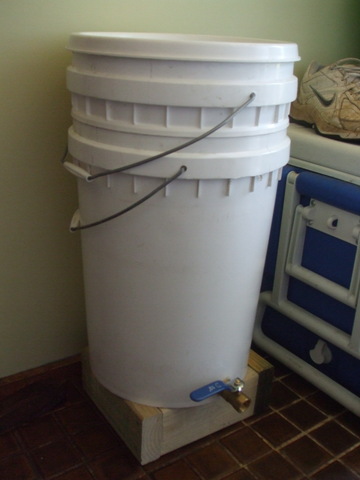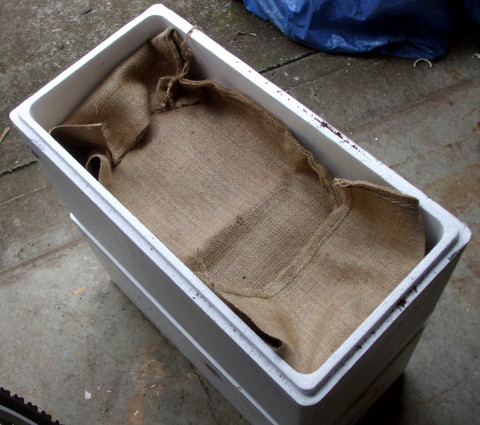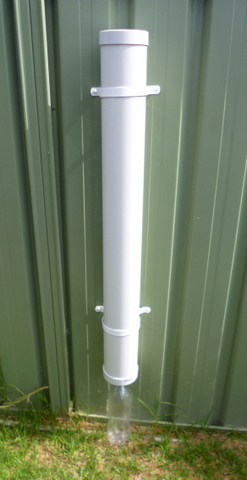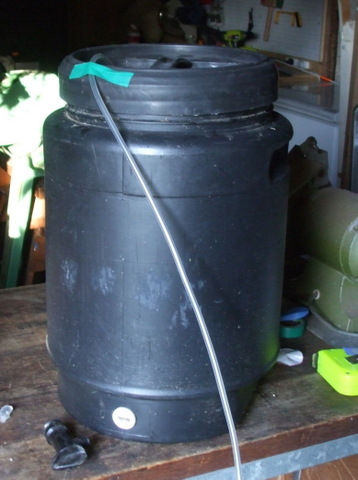It is comparatively easy, all things being equal, to get a crop from a pot or container with fresh potting mix/growing medium, although adding some nutrients during the growing cycle can improve yields as well. However, once the first crop is obtained, to keep yields up it is always advisable to add nutrients in some form. If the nutrients can be produced at home, so much the better.
Below are instructions on how to construct and use Four pieces of equipment that will allow you to take advantage of materials or wastes produced within or near our homes –
1. Bokashi Bucket – This uses an anaerobic bacterium to ferment vegetable and other wastes and convert them into a form that plants can use directly to supply their nutrients. The downside is the need to buy the bokashi mix regularly and I believe that this can be produced at home using a commercial starter but I have not tried it, so can’t really comment.
A lady I know uses the output of her bokashi bucket by placing it unaltered into the bottom of her pots and then covering it with growing medium. This allows the plants to send roots down and harvest the available nutrients directly as they grow. Bokashi also does not have the drawback that composting can have, in that no unpleasant smells are produced. It does have its own odour, but I for one do not find it offensive.
Link: Making and using your own bokashi bucket
2. Low Tech Worm Farm – There are lots of worm farms on the market, but this is an idea for making your own out of readily available, cheap and recycled raw materials. There a few more restrictions on what you can put into a worm farm vs a bokashi bin, but they still have their place and are a great way to prepare veggie waste for re-use and capitalise on the nutrients it contains.
The output comes in liquid (so called ‘worm wee’) and solid (worm castings) forms. The liquid form can be diluted and added directly to container gardens and while the solid form can also be added to the growing medium as a mulch, or mixed in, it also has another benefit. When combined with coarse sand and cocopeat it can be used to make your own Zone Zero seed raising mix, which will help when starting your own veggies from seed.
Link: Making a low tech worm farm
3. Liquid Fertiliser Extractor – While this was originally put together to extract nutrients from comfrey (a wonderful dynamic accumulator) but can be used with any dynamic accumulators you may be able to harvest in your surrounding area, or from the yards of friends and family. Eg stinging nettle, chickweed, dandelion and clover.
The biomass obtained goes into a cylinder and breaks down over time, yielding a nutrient rich liquid from the bottom of the cylinder which is then diluted and applied directly to the productive pots and containers.
Link: Making a liquid fertiliser extractor
4. Bio-fertiliser Reactor – Back in the 80’s when I was doing the Farm Technology Certificate and we talked about growing mediums and soil, fertility was discussed in terms of chemistry rather than biology and there was no mention of the soil biota. The previous three techniques have been about replacing the plant nutrients, this one is about improving the biota in the growing medium.
It is basically a small fermenter and by adding water, nutrients and a starter in the form of good compost or worm castings, keeping it aerated using a small air pump and at the right temperature you can grow your own beneficial bugs! The liquid is applied in diluted form directly to the growing containers (early morning or late afternoon preferable)
Link: Making biofertilizer on a small scale
Oh, and Compost Tea!
What I have not mentioned is perhaps the lowest tech, cheapest and easiest way to harvest nutrients from waste and plants that has ever been designed – Weed/compost/
manure tea. It is simple in that all you do is get hold of a bucket, fill with water, then steep organic material in it, leave it for a couple of weeks, decant, dilute (to the colour of week tea is best) and apply to your growing veggies. There is a downside – This is another way of harvesting chemical nutrients and it is anaerobic, so it STINKS! If you have room away from the living areas (and the neighbours!) this is a low cost, low tech way of producing nutrients for your crops in pots. I would be a bit careful about crops that are eaten raw, like lettuce though. You don’t want to be splashing this stuff on the leaves!






